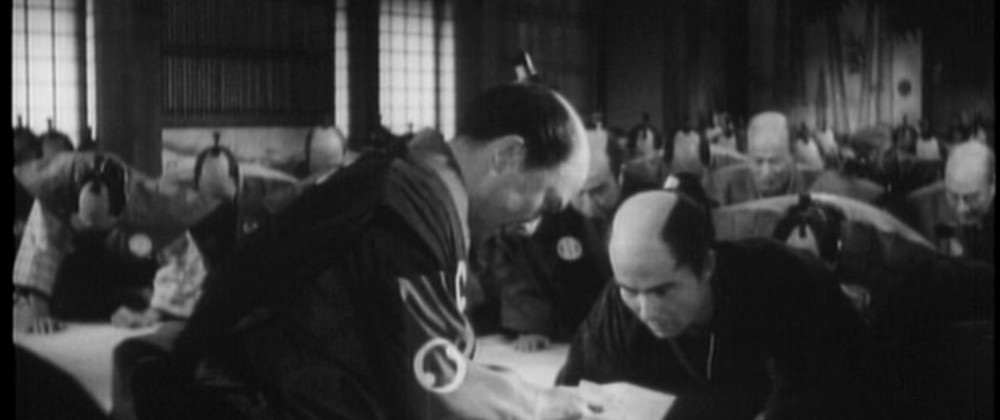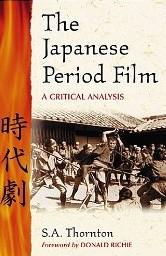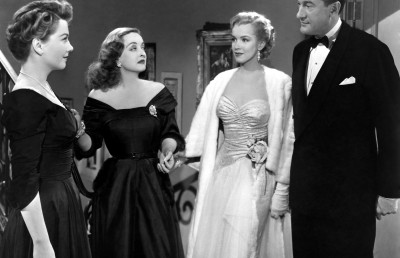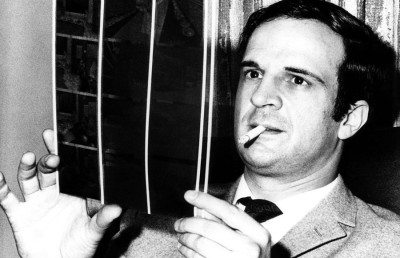The Japanese Period Film: A Critical Analysis

The Japanese Period Film: A Critical Analysis, written by Sybil Anne Thornton, was published by McFarland and Company Inc, North Carolina, USA in 2008. It took Thornton almost three decades to finalise the book. She rationalises this delay on page VII of the acknowledgment by writing, “work on the book was interrupted by some twenty years researching and writing a Ph.D., finding a permanent job, and getting tenure.”

Donald Richie (b. 1924), a Western pioneer in the study of Japanese cinema, culture and society, has written a forward to the book. There is a tendency among Western film scholars (especially Americans like Thornton) who work on Japanese film scholarship to have their book forwarded by Richie or dedicate their work to him. This academic habit helps other researchers or intellectuals on the subject to surmise that the book is influenced by Richie’s ideas and thus worth reading. Furthermore, it encourages young university students who are not familiar with a writer like Thornton, but who know Richie (thanks to university tutors), to purchase the book. Richie identifies the main concern of the book by writing:
How we got here…this is one of the tasks undertaken by Sybil Thornton in her valuably iconoclastic essays on Japan’s relation to its past. To this end, she studied Japanese legend, epic, and chronicle, turning these pages of history and indicating how the copies differ or how they remain the same. (2008, p.1)
He continues his account of Thornton’s book by naming ‘Japanese film and the Japanese narrative and theatrical tradition’ as the elements that intrigued Thornton in her research. These explanations should be satisfactory for the reader. However, Richie misses one minor point; he overlooks the fact that Japanese TV programmes are great source of information and research for Thornton as well as theatrical traditions. In the introduction of the book she says that it was due to watching Kon Ichikawa’s television series Genji Monogatari (The Tale of Genji, 1966) that she became interested in studying Japanese visual culture and narrative style. Moreover, throughout the book she uses different TV series’ as a field of study.
The next point is that ‘Japanese theatre’ or ‘theatrical traditions,’ are not the concern of the book per se, but its syntax. Thornton (p.3) explains the book’s concern as follows:
Because this study proposes that there is indeed a relationship between past and present in the narrative tradition of this nation [Japan], distinguished by its cultural development under conditions of near hermetic seclusion, it affirms the notion that Japanese cinema is indeed distinctively, if not exclusively Japanese.
According to her doctrine the direction (or as Richie calls it ‘concern’) of the book is to establish a relation between past and present. This goal as the theme of the book flows in every chapter and stands as the spine of the entire text. She believes that Japanese period films have borrowed the above theme from Japanese traditional theatre. She suggests this notion in different parts of the text, but probably, the most coherent and clear version of it is on page 116 where she writes:
[…] during the Tokugawa period, censorship forbade kabuki and puppet theatre [two styles of Japanese performing traditions] to stage events concerning the upper class […] and the nobility. Kabuki responds by developing a rhetorical device to evade censorship control, the matching of past and present (mitate), whereby contemporary events were carefully hidden in well-known historical events of the past.
The two key concepts of the above paragraph are “carefully hidden” and “well-known historical events.” The latter refers to the incident of the 47 Ronin, which impacts the Japanese narratology. This event, and the stories that are based on it, can be seen as the Japanese equivalent of Sophocles’ Oedipus, which has had a significant effect on Western narration. According to Thornton, the account of the incident is:
On January 30, 1703, forty-seven former vassals of Naganori Asano (1655-1701) of Ako (in what is now Hiroshima prefecture) broke into the residence of Yoshinaka Kiro (1641-1703), master of ceremonies to the shogunal house, and took his head to avenge the sentence of ritual suicide imposed on their lord and carried out some twenty months before. Forty-six committed suicide on March 20, 1703 [only one of them did not kill himself]. (p.31)
The thesis of loyalty to one’s master is what makes this story popular. Furthermore, this episode stands as an essential aspect of period drama piece due to representing the concept of ‘conflict.’ A samurai must always follow the codes of bushido (samurai’s rules and regulations). In the case of the 47 Ronin this means the need to accept one’s master’s death, and respect the codes which prohibit the retainers from seeking vengeance. Nevertheless, Thornton questions their ninjo, that is, their honour. As samurai, they can not accept that their lord perished, yet do nothing. So their vengeance is the case of honour versus duty, not good versus bad. Thornton argues that in a variety of historical books on the subject it has been said that Yoshinaka Kiro, in contrast to popular belief, thought that he was not the villain of this event. So it is the conflict of the situation that attracts writers to the story. The result of this ‘attraction’ can be viewed in the majority of Japanese period films. The heroes of these films are not necessarily good, decent, law-abiding individuals (unlike heroes, for example, in American classic films). In reality, the hero of a Japanese period film is the person who has the most ‘conflict’; thus, the greater the conflict, the greater the hero’s charisma.
In order to be able to perform a story inspired by this occurrence, kabuki playwrights chose previous centuries for the time setting of their plays to avoid government censorship. This initiated a tradition for doing the same with present incidents; consequently, the anachronistic nature of period drama pieces started. The reading and re-writing of events of historical importance, in this fashion, helped the writers and artists criticise the contemporary values under the façade of the past. As the result, the authorities had no reason to censor the plays.
Thornton expands her argument to reflect on the debate of ‘national identity in Japanese cinema,’ a debate that scholars or students who work on Japanese film encounter regularly. It is the legacy of previous Western writings on Japanese films, which can be found in Noël Burch’s To the Distant Observer (1979) or any of Donald Richie’s books. Thornton says that her objective reason for writing the book is as a response to recent American scholars who see no difference between Japanese and American films. This refers to Richie’s idea that in recent years he distanced himself from his earlier notions and came to the conclusion that different national cinemas are similar in form and content. Thornton accepts this thought only in terms of production, i.e. Japanese films and American films go through the same process of being made (pre-production, production, and post-production). On the other hand, she notes that Japanese films are different from other national cinemas, for they have different narrative roots. She (p.4) writes: “This study […] relies less on any one analytical method or combination of methods than on what seems a foregone conclusion: that Japanese period film, those films set in the past, belong to a discrete national narrative tradition and must be understood not exclusively, but first and foremost as much.” Thornton, in order to manifest and explain her theory, divides the book into three parts (they contain twelve chapters altogether).
The first part is called “The Narrative Set in the Past.” This section is almost two-thirds of the book. In its ninety-six pages, the writer goes into the origins of storytelling traditions in Japan. In addition, she explains how the Japanese narratology has evolved over the centuries. Finally, she notes the way this evolution affects Japanese period films.
The main idea that bridges the chapters is the incident of the 47 Ronin. Moreover, Thornton constantly circulates the theme that period films in Japan intend to criticise the present through historical incidents. The latter idea is not a novel argument, since most of the major scholarly work on Japanese cinema suggests a similar philosophy or assumes this idea as a ‘matter of fact.’ However, Thornton manages to go one step beyond the other scholars. She (pp. 13-14) writes: “Yoshikata Yoda (1909-1991), scenarist, has made it clear that the films he wrote for Kenji Mizoguchi (1898-1956) are not jidai-geki (period films) but rekishi eiga (history films). There are also films by other Japanese film directors well-known in the West […] which must be classified as history films rather than period pieces.” The novelty of her thinking is due to the view that there is a distinction between history films and period films (an idea which is ignored by many scholars). Which would lead to the following query: “On what grounds should this distinction be defined?” Thornton does not address this question. In fact, she expresses her innovative hypothesis in one short paragraph and then moves on to another topic. This not only frustrates readers, but robs us of an opportunity for learning more about this captivating binary.
The other intriguing point that she writes about and explains in-depth (in contrast to above hypothesis) is the iconography of the Tokugawa period (1603-1868). She (p.15) says: “In order to understand a Japanese period film, it is necessary to be able to ‘read it,’ and the principal reading skill is a grasp of the iconography, the ability to identify and to interpret the signs carried by the characters in the films.” She identifies these signs as the characters’ costumes, hair style etc. Icons and signs are not only the lexicon of period films –they also represent contemporary society. Thornton suggests that it is often the case in Japanese period films that these signs are up-to-date so that the audience comprehends that the film’s narrative is a critical account of contemporary society. For example, in the Tokugawa period, married women would paint their teeth black and shave their eyebrows. This is not the case in period films. The lack of this make-up in married women in these films causes them to more closely resemble contemporary women.
The third chapter, “The Japanese hero,” is another aspect of the book’s first part which merits scrutiny. The importance of this long chapter (thirty-six pages) more than outweighs the shortcomings of the book. The Japanese hero has always been studied in contemporary terms; a multitude of scholars, Japanese and Western alike, study the hero as if he were a member of the Japanese society in the year that the film was made. For example, the heroes of Akira Kurosawa’s Seven Samurai (1954) are seen as Japanese men of the 1950s. The reason for this reading is understandable; after all, Japanese period films are meant to criticise the present society. So, each hero represents a contemporary subject. I believe this reading makes the social aspect of the films more significant than any other aspect. Thornton offers an intelligent, mature and clear interpretation of this idea, which introduces a new angle to the study of Japanese heroes. She sees them not only as members of society, but also categorises them into three groups: ‘the tragic hero,’ ‘the anti-hero,’ and ‘the social hero’; furthermore, she explains the details of each hero’s characteristics. The issue with her explanation is that she overlooks the point that not all of these heroes are represented in films exactly as how she defines them e.g. it can be seen that some of Kurosawa’s heroes are a nexus of ‘tragic hero’ and ‘anti-hero’. Besides this minor issue, this chapter is the most pioneering and detailed segment of the first part.
The sometimes faulty aspect of her objectivity is illustrated in the fifth chapter “The Yakuza Film.” Film scholars often argue that yakuza films are a parody of the feudal conventions and hierarchy that period films depict. Thornton (p.93) notes: “The yakuza film […] offers an alternative to a description of the cruelties and betrayals perpetrated by lords on their vassals: yakuza can fight back.” The problem with this reading is that it does not match the raison d’être of the yakuza films: These films were popular in the sixties and seventies, but short-lived. Due to the advent of television, film studios were looking for films that would attract viewer’s, especially the young male audience. Yakuza film, and its over-the-top violence and depiction of sexuality, was the perfect tool. So in contrast to the period film that was the language of criticism, the yakuza film was a commercial product.
Another problem with this chapter is that because it isn’t linked to the book’s motto it stands apart from the other chapters. Thornton should consider the idea that writing a book is like making a film. At the end of the day, the creator of the text (director or writer) has a few suitable materials, but by editing and re-evaluating, he or she chooses the ones that fit together. Besides its structural issues, the first part of the book stands as the foundation for the rest of the book; parts two and three benefit from the main arguments that the first part maintained –the iconography of the Tokugawa period and the story of the forty-seven Ronin.
The gist of the second part of the book is how Western plays and theatrical conventions affect Japanese film narrative. Bringing up this discussion is of pivotal concern; it fits perfectly with the arguments of first part (besides the chapter on yakuza films). Therefore, it contributes to the book’s conclusion that Japanese cinema is not identical to Western cinema in terms of the films’ content. Thornton, however, does not suggest her ideas on the subject in a superficial manner insofar as she acknowledges the influence of Western performing arts on Japanese cinema. She (p.109) argues that ‘realism’ is the most important Western concept that enters Japanese films and plays; “The modern period piece increased its reliance on modern language and foreign models of narrative and characterisation, on what we can loosely call western representational realism.” This idea can be seen as her sympathy with the early scholarly works on Japanese cinema, which claim this Oriental cinema per se is presentational. Thornton also suggests that Japanese artists combine the imported representational realism with their theatrical conventions, which are the base of their cinema. She writes how the actors in late nineteenth century and early twentieth century travelled to Europe and brought back the style and atmosphere of Western stages to Japan.
She continues her argument by noting that the adoptions from the West are visible in kabuki; the ‘western representational realism’ entered the kabuki stage in the 1910s and then subsequently the period films of the 1920s. One important datum which she does not mention but which can be found in other written works on Japanese cinema is that kabuki provides Japanese film studios (where the majority of period films are made) in the early days of the cinema with guidelines on how to make a film. There is another shortcoming in her argument –she points out that the post-Tokugawa rulers utilised kabuki and period films to introduce Japanese culture to the West, but then she unexpectedly drops the topic. One could explain the matter by noting that, being Japanese-Western, the kabuki and its cinematic representation were propagandist tools: they had the characteristics of the former in that they were “criticising the present society in the terms of past.” As she points out, they were similar to Western art, as they borrowed the realism ethos of Ibsen and Chekov plays. Such an argument would have helped Thornton realise the fault of her book’s conclusion. Japanese cinema does not differ so radically from Western cinema; due to the concept of ‘realism,’ and that they have more in common than just the modes of production.
The third part of the book, “The Scene in Japanese narratives” tries to answer the following question: “What makes a Japanese film, Japanese?” She answers by explaining and arguing about the influence of Buddhist sermons on period drama films. There exists one significant issue with this kind of approach. The usage of Buddhist doctrine is represented solely in epic films. The stories of these films occur in the eighteenth century. The reason is that in this epoch of history, due to the civil wars and variety of coups d’état, the Tokugawa government was in political distress. As a result, the concept of personal conflict which highly influenced period films are absent from the plays of this century. Moreover, she does not explain the use of Buddhist teachings in films that happen in nineteenth century. So the readers cannot discern whether or not these teachings are only the characteristics of films set in the eighteenth century, or other centuries as well. If not, then what is Japanese about a film that tells a story in the nineteenth century? I do argue that on the surface, films that are concerned with epic battles of the eighteenth century are not period dramas but historical films. They do not have the ‘one-to-one’ relation evidenced in period films that occur in the nineteenth century. It is because of this relation that the ‘critical ethos’ of period films appeals to audiences.
There are two informative discussions in the third part. The first one contains the sub-traditions that dominated the period films for decades (e.g. calling one’s mother in a moment of agony, a character committing suicide, an old man who cares for children etc.). They enable the film’s viewers to comprehend the personality of each character. They might be unseen or insignificant to a Western audience, but for Japanese they are the film’s clues. With giving this discussion Thornton provides her readers with jargon for reading and interpreting period films.
The other significant argument of the third part is that it explains why modern period films are important. Thornton (p.4) writes: “[this book is] the product of some thirty years study and teaching of Japanese cinema, history and epic.” This statement tells readers that she had three decades to modernise her work. She writes that in the last few years, due to the works of Yoji Yamada (b. 1931), period films have been reinvigorated since the decline of film studios in the 1960s. Yamada and his period films caused this by portraying the pros and cons of old and new traditions. Although he still criticises the present, he seeks the solution in suitable traditions (of past and present). If in the films of the 1950s or 1960s the heroes would respond to their personal conflict by committing suicide, the new heroes overcome the conflicts in a more subtle way; they choose between duty and honour and take action. Thornton explains that in order to convey the praxis of period film conventions Yamada modulates them to fit the new millennium.
The book is obsessed with films that are set in the Tokugawa period. There are two possible reasons: as stated previously, it was during the Tokugawa period (aka. the Edo period) that the tradition of criticising the present through the incidents of the past began. The second possible answer is rooted in the nature of the pre-Tokugawa period. Although Thornton sees this as the sixteenth century’s nature, it can be expanded to other previous centuries as well because the social norms and ethics of Japan were almost intact. She (p.88) writes: “The sixteenth century is not characterised by a single, coherent body of meaning or set of narrative assumptions like those provided by the Tokugawa period…there are no absolute one-to-one correspondent or parallels between present and the sixteenth century.” The Tokugawa feudal system established conventions and rules that were different from the past. Moreover, even today in the twenty-first century some of these feudal beliefs can be seen in Japanese society. The most notable one is how employees are expected to respect their employers and always feel inferior to them. In fact, many social thinkers argue that although the Tokugawa feudal conventions disappeared from the façade of the society, they still are observed and practised in the country’s industrial and financial organisations. Joan Mellen (p.7) explains this point in her book The Waves at Genji’s Door (New York: Pantheon Books, 1976) by writing: “the Meiji Restoration brought the political and ethical structure of feudal time intact into the industrialising modern Japan.”
The Japanese Period Film: A Critical Analysis does not privilege its readers with a formal conclusion. In fact, this is one of the few academic books I have encountered which lacks a conclusion; the reason is that Thornton approaches her subject as one massive university assignment. She (p.4) writes that, “[the book] is a synthesis of a master thesis, a bachelor’s dissertation, a doctoral thesis, papers presented at academic conferences.” She explains her objectivity in writing the book in the introduction and then spends two hundred and eighty pages justifying her ideas.
“How does one summarise this book?” The answer is that this academic text indeed recognises the shortcomings of the existing scholarships on Japanese period films. It represents a theory, criticising present in terms of the past, to fill the gap in other academic books. It gives evidence for supporting the represented ideas in the book, but unfortunately it fails in some of its arguments. This is partly due to its structure, which gives much unnecessary information. There is no doubt that Thornton has a vast knowledge on the subjects of Japanese cinema, culture, history and society. The magnitude of books, articles and films that she uses as sources is genuinely fascinating. But sadly this passion in some passages turns to a dangerous obsession that blinds her to the lack of strength in some of her key arguments. Thus, it is often the case that the thinking behind the book is lost in the immense amount of information.
As a final verdict on the book: this is a must-read book for film scholars or film students who are interested in Japanese period films. However, in using the book, the reader should absorb the information and ignore some of the arguments and form his or her own instead.













